Posts Tagged: rice
Perfect Timing for Publication of Important Research Paper on Root-Knot Nematodes
Perfect timing. Today, during the 62nd annual international conference of the Society of Nematologists, being held July 9-14 in Columbus, Ohio, The Proceedings of the National Academy of Sciences (PNAS) published a UC Davis...
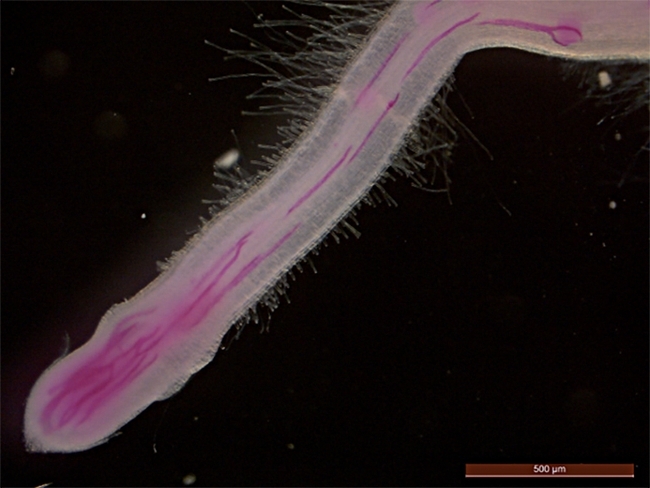
An illustration from the PNAS paper: Rice infected by root-knot nematodes (stained in red). (Illustration by Shahid Siddique)
Ten Facts You May Not Know About Tadpole Shrimp
How much do you know about tadpole shrimp? First, they're neither tadpoles nor shrimp. Second, they're crustaceans and are pests of rice. Tadpole shrimp will be one of the topics that Cooperative Extension specialist Ian...
Begone Tadpole Shrimps! They're 'Time Travelers' in Rice Fields
You may have never seen a tadpole shrimp, but you ought to be concerned about it, especially if you like rice. It's neither a tadpole nor a shrimp, but a crustacean pest that feasts on rice seedlings in flooded rice fields. Rice growers currently...
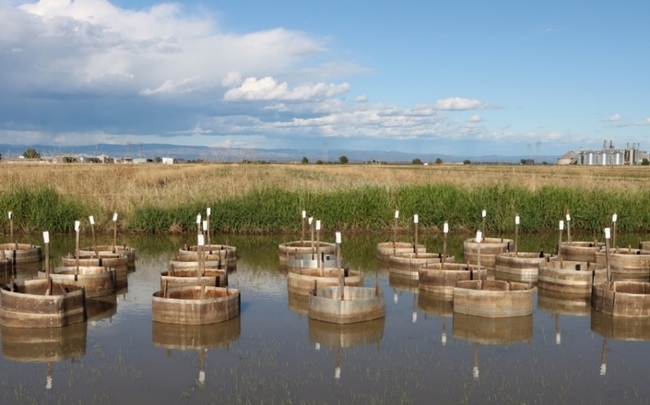
A field trial at the California Cooperative Rice Research Foundation Inc. Rice Experiment Station near Biggs, Calif. (Photo by Ian Grettenberger)
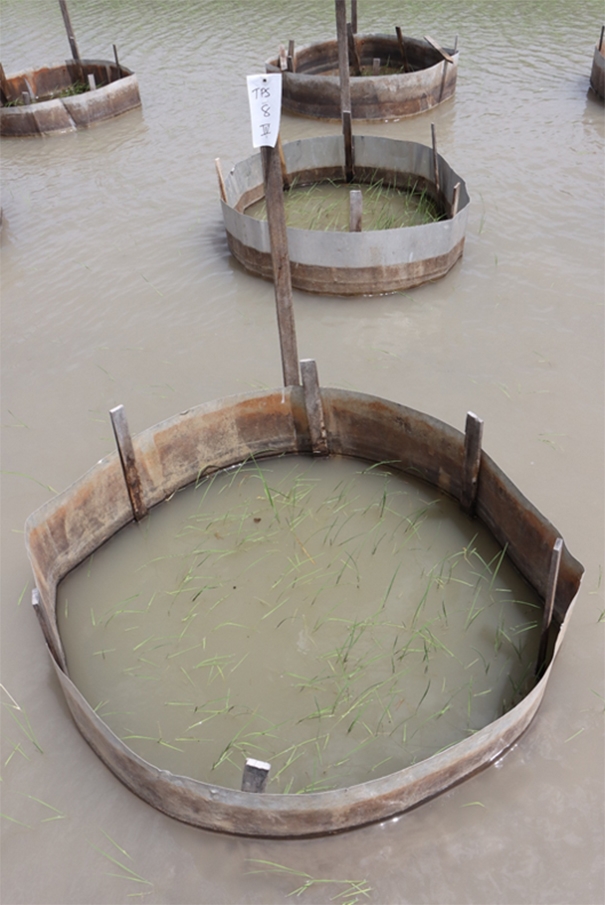
UC Cooperative Extension specialist Ian Grettenberg said that "we evaluated alternative management strategies that could be used to manage tadpole shrimp. We tested a number of materials using small metal ring plots and natural shrimp population. (Photo by Ian Grettenberger)
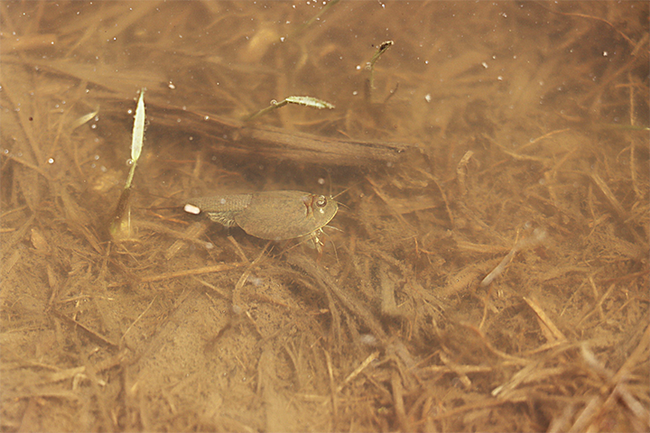
A tadpole shrimp feasting on rice seedlings. (Photo by Ian Grettenberger)
Float Like Lepidoptera, Sting Like Hymenoptera?
"Float like a butterfly, sting like a bee." Early in his career, the late heavyweight champion Muhammad Ali (1942-2016) drew international headlines when he uttered that remark before his 1964 fight with then champion Sonny Liston. It was all...
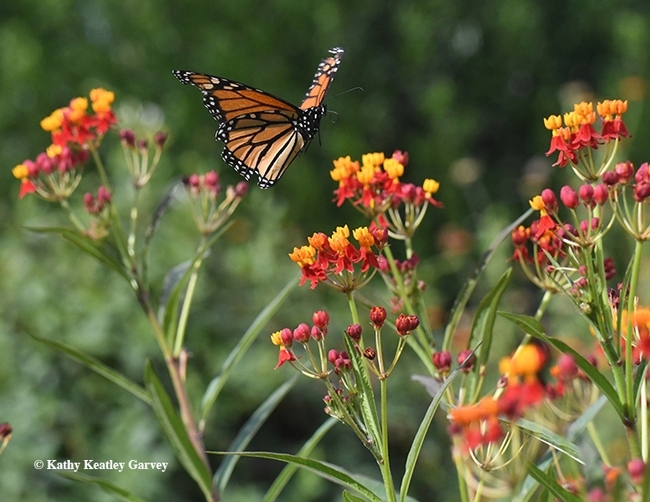
FLOAT LIKE A LEPIDOPTERA--A monarch floats over milkweed, its host plant, in this image taken in Vacaville, Calif. (Photo by Kathy Keatley Garvey)
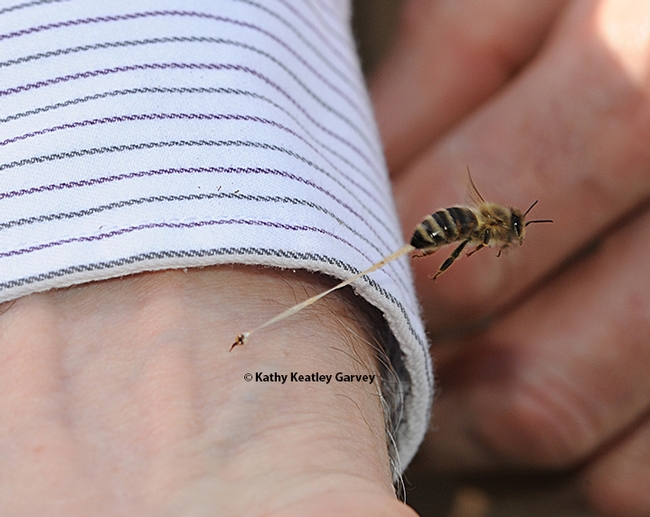
STING LIKE HYMENOPTERA--A honey bee, defending its colony, stings Extension apiculturist (now retired) Eric Mussen of UC Davis. Note the abdominal tissue as the bee is pulling away. (Photo by Kathy Keatley Garvey)
The Good, the Bad and the Bugly
The good, the bad, and the bugly... Don't miss the UC Davis Bohart Museum of Entomology virtual open house on alfalfa and rice from 11 a.m. to noon on Thursday, Oct. 22. Cooperative Extension agricultural specialist Ian Grettenberger,...
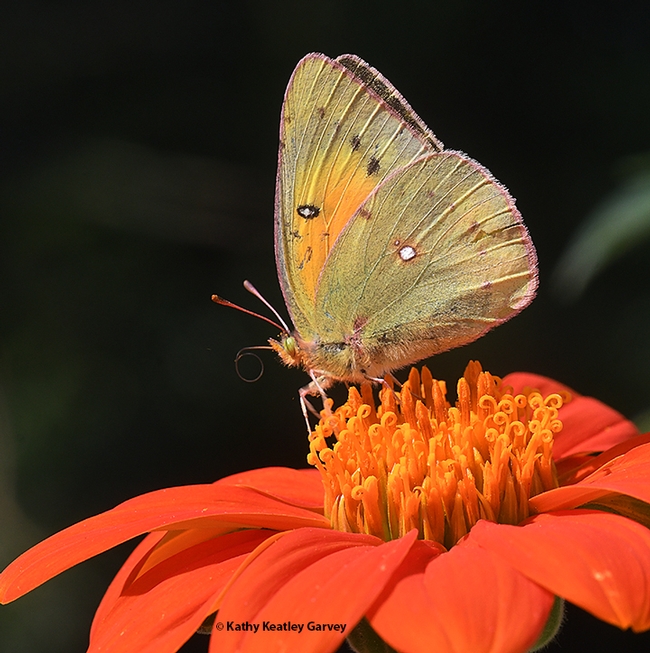
The larvae of the alfalfa butterfly are major pests of alfalfa. This butterfly is sipping nectar from a Mexican sunflower, Tithonia rotundifolia. (Photo by Kathy Keatley Garvey)
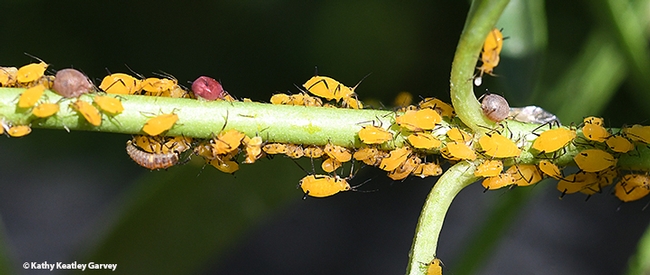
Aphids suck the plant juices of alfalfa. This image shows aphids on a tropical milkweed stem and an immature lady beetle (ladybug). The larvae also eat aphids. (Photo by Kathy Keatley Garvey)
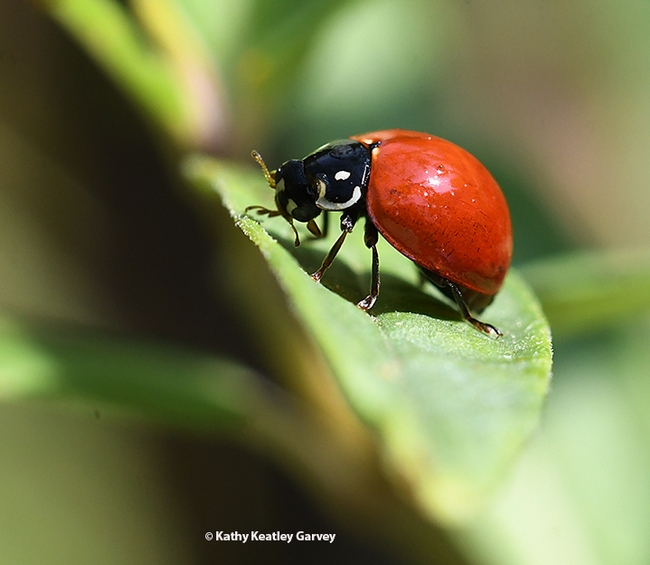
The lady beetle, aka ladybug, is a beneficial insect. It can devour some 50 aphids a day. (Photo by Kathy Keatley Garvey)

